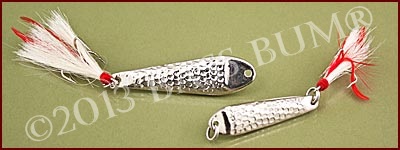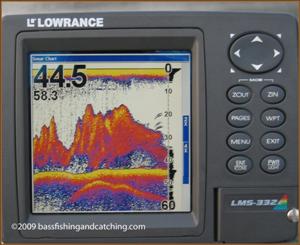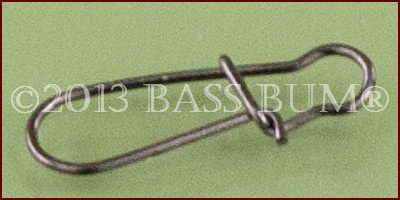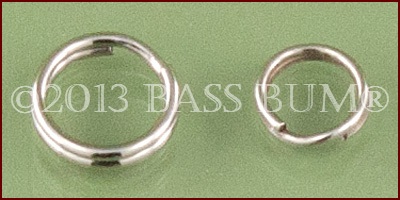Jigging Spoons
An Unloved, Unappreciated, But Effective, Technique
Strata Spoons from Bass Pro Shop

Because I'm a junk bass fisherman jigging spoons are a part of my tackle bag contents. I try as many different kinds of lures and techniques as I can because I feel this puts me a better bass fisherman in the many changing situations we bass fishermen encounter. It ups the odds I'll catch bass on each trip to the lake. Sadly, many, probably most, bass fishermen don't include freshwater jigging spoons in their lure arsenal for bass. Consequently, they never learn proper jigging techniques for fishing what can be a very effective technique.
Jigging spoons, these metal, nondescript lures have been catching fish of all kinds since the mid 1840's and continue to catch fish today. I'd say there is something to them. That's staying power if I've ever seen it!
Jigging spoons are not search lures but are "location specific". That is, you first locate the bass with your electronics, put your boat on top of them, then drop the spoon right into the middle of them.
A jigging spoon is generally considered as "deep water" lures when it comes to fishing spoons for bass. They are usually heavy, from 1/2 to 2 1/2 ounces in weight. As such, they require particular attention to tackle used.
When, Where And How Do You Fish These Chunks Of Metal?
The best times? Fall and winter are the best seasons for deep jigging fishing spoons as far as I'm concerned. In late fall and winter an ideal water temperature for fishing spoons is between 37° and 47°. Within this temperature range baitfish will gather at specific depths, often on steep structure or among the tops of standing timber. Look for bait balls and bass arches on your sonar screen. If you don't see them move to another place. Otherwise you might as well be fishing in your front yard.

So, first thing you must do before fishing spoons is FIND THE BASS! Start your hunt in the mouth of a cove slowly moving your boat back and forth across the channel of the creek with your trolling motor. Look for vertical structure, humps, drop offs and channel bends that have baitfish balls around them. Even if you don't see bass around the baitfish, as shown in the picture at right, drop a jigging spoon anyway, especially if they're on or almost on the bottom. The bass are going to be close by for sure.
Techniques For Fishing Jigging Spoon Lures For Bass
Bass On The Bottom?
Position your boat over any baitfish cloud found. Then drop your spoon straight down. Remember, the great majority of strikes occur "on the drop" as the lure "flutters" downward like a wounded minnow. If you allow too much slack you may well miss detecting a strike as bass can suck it in and spit it out in an instant. Semi slack line will transmit a strike to your hands most of the time. Additionally, the spoon will descend turning, weaving and bobbing against the resistance of the water instead of 'zinging' downward like a lifeless stone.
Once your spoon is on the bottom, level your rod over the water at the 3:00 position. Raise your rod tip with a snap straight up or with a 20° "sweeping" motion to one side or the other. Don't raise it more than two feet. After this drop it back to the bottom. Repeat this several minutes. If no strikes occur you might want to change the rate and distance you jig the lure. For example, raise it with more or even less quickness. Lift it 3-4' instead of 1-2'. varying your speed and height of rise may attract bass who just prefer it different ways. Let them tell you what they want.
You can vary your jigging techniques by allowing the lure to hit the bottom then lift your rod tip just enough to pull it up vertically on its tail but with it still Immediately drop your rod tip so the lure flops down on its side again. If you repeat this over and over it will appear as a dying shad and attract attention as an easy meal.
Bass Suspended?
Though jigging spoons are intended to target bottom hugging bass they can be put to good use when bass are schooling under baitfish balls.
Suspended bass are common in the fall and winter. They hold below and actively feed on baitfish that are staging in the mouths of creeks before entering and moving toward the backs of the creeks. The shad may be 10-20' down or just under the surface and underneath will be the bass. Drop your jigging spoon into the baitfish or just to its side and jig it by raising your rod up two feet and dropping it one, raising it two dropping it one till the lure is above your target ball of baitfish. Then drop it below the ball again and repeat.

Tackle Considerations
Rod
Since you're usually deep water jigging for bass and working a heavy lure pick at least a medium-heavy to a heavy rod with a good backbone. The technique for fishing jigging spoons can be quite tiring after a few hours. It can also wreck havoc on your wrists and elbows. Additionally, the rod must be such that it enables a good hook set.
Reel
Either a spinning or casting reel will do. Some prefer a casting because they have a thumb bar release which some anglers feel provides a bit more control over the "drop rate" of the spoon. If you're skilled with a spinning reel no doubt you can achieve the same thing by running the line through the fingers of your other hand.
One important feature is that your reel be high speed. Since many bass, once hooked, will head straight toward the surface you want a reel that enables you to keep up with them because once they break water throwing a jigging spoon becomes much easier for them.
Line
Line that is 6-8lb is "not" going to serve you well when fishing spoons. In fact, 10-12lb should be considered the "minimum" line rating to use. My preference is monofilament or fluorocarbon, though some use braid. I know it's dark down deep and the bass probably don't see braid, but with me it's a mental thing.
Trick Out Your Jigging Spoons For Better Performance!
 |
 |
Joining Line To Spoon
A split ring or a "snap" is essential in order to maximize the action of the lure. Many "slab" spoons come without them. If yours have none, add split rings and tie to the ring!
I choose to add a ball bearing swivel to my setup as well. I place the swivel on the split ring. This goes a long way towards minimizing "line twist". Others will not do so as they feel line twist is just as easily reversed by giving the line some slack. I'd rather not have to deal with it to start with as I feel it weakens the line. Adding a swivel to the split rind will still require but "one" tie, not two.
An alternative is to tie a 12-15" leader of fluorocarbon between the spoon and swivel. However, this requires a second tie and creates another possible weak spot in your rig.
Add a split ring and swivel or a "snap" and the lure's wobble action will be enhanced.
Change Factory Hooks
If you check out the hooks that come on most jigging spoon lures they tend to be thick nickel and marginally sharp. This presents the problem of poor tissue penetration.
Change your hooks to light wire hooks. Why? They are sharper and will bend out if you get hung up, and you will, enabling you to recover your spoon. They may just be chunks of lead but they are not cheap!
I replace hooks on my 1/2 and 3/4 ounce spoons with #2 Owner or Gamakatsu treble hooks. Sometimes I'll add trebles dressed with feathers. I think they attract more attention and maybe slow the fall a bit. This is important for the great majority of strikes when fishing spoons occur on the fall.
How about adding a second treble above the nose end of the jigging spoon? Run the tag end of your line through the eye of the treble hook then tie to your spoon's split ring. You did add one didn't you? Maybe you'll catch a double.

Try jigging spoons. There is no better way to catch bass in fall and winter when they're chasing baitfish or have moved to their winter homes awaiting spring.
Return To Fishing Spoons From Jigging Spoons
